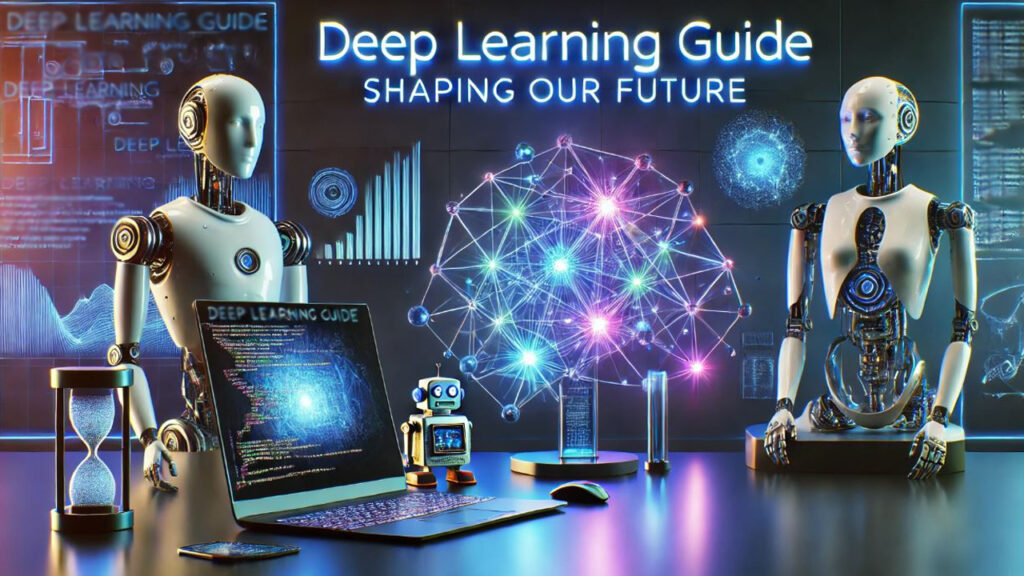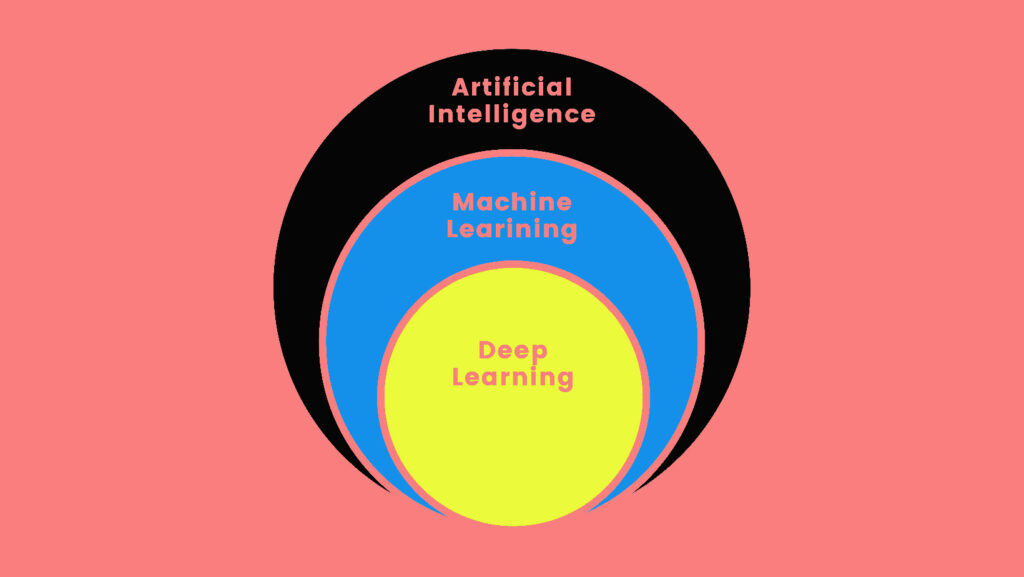Hello! Have you ever wondered how your phone knows your face or considered how a virtual assistant like Siri even comprehends your voice? Well, deep learning is the magic behind these technologies. It’s part of artificial intelligence that enables machines to learn and act like humans. It’s an article about what deep learning is, how it works, and why it is big today. So, take a comfortable seat, and let’s begin our journey in this fascinating world!
1. Deep Learning Demystified
Deep learning enables a computer to think and learn by itself. Imagine you have a great stack of Lego blocks. Each block has some tiny information. Stacked together in a certain order, they allow you to build an amazing castle. In deep learning, the Lego blocks are replaced by neurons, and they are tightly packed in layers that form networks to learn from data.
A simple example would be: Suppose you want a computer to recognize pictures of cats and dogs. You would show it thousands of pictures with tags like “cat” or “dog” until the computer has gone through these, learning the differences and similarities, until it actually became very good at telling them apart.
However, what makes deep learning very powerful is the multiple layers in these networks called deep neural networks. So, the computer can distinguish between different edges within an image or the tone of voices, which allows the computer to understand complex patterns. It is this concept of depth that allows deep learning to actually be deep, with respect to other kinds of machine learning.
2. History and Evolution of Deep Learning
Now, let’s take a bit of a detour through time. Deep learning actually began way back in the 1940s when scientists began dreaming about machines that could act like a human brain. Again, everything changed in the 1980s because of the invention of backpropagation. Well, that really just means teaching neural networks in such a way that it adjusts to ensure minimal errors.
Fast forward to the mid-2000s, and we saw a big jump in deep learning progress. Think of having a tiny toy car, then all of a sudden getting a real, very powerful sports car. That basically is what happened when researchers had access to powerful GPUs, that is, Graphics Processing Units, together with tons of data from the internet. A so-called deep learning model, AlexNet, became the winner of an image recognition contest in 2012, much to everybody’s surprise. It was like the underdog winning the World Cup!
of the past few years, deep learning really took off, helping us make huge strides in everything from self-driving cars to medical diagnoses. It is more like having a super-smart friend who keeps getting smarter every year.
3. How Deep Learning Works
Now, let’s break down how deep learning actually works. Imagine you are baking a cake. First, you collect your ingredients (input data), like flour, sugar, and eggs. Mix them together, bake them—process the data through layers—and voila! You have a delicious cake; that means output, like recognizing an image.
In deep learning, it’s ingredients in the form of bits of information, like pixels in an image or sounds in a voice recording. These bits flow through layers of the neural network. You can think of a layer as rather like a different step in your cake recipe. Whilst one layer may detect the edges in an image, another may recognize shapes, and so on. Once data has flown through all the layers, the network can make quite a decent guess as to what it’s looking at.
Training these networks requires a great deal of tweaking. That’s like adjusting the recipe to get that cake just right. Something called backpropagation makes all the adjustments, much like tasting your cake batter and adding a little more sugar if it’s not sweet enough. This process helps the network learn from its mistakes and improve over time.
4. Types of Deep Learning Models
There are different types of deep learning models, and they are good at different things. Let’s meet some of the main ones:
Feedforward Neural Networks (FNNs):
Think about them as the basic models. They’re like a simple recipe with just a few steps. They’re great for doing simple classification, which is just labeling things. However, make your work easy with automatic labeling systems.
Convolutional Neural Networks (CNNs)
These are the master chefs of image recognition. Imagine having a set of filters through which you can project a photo and it will show the edges, colors, and textures. CNNs do exactly this while considering the image in detail to recognize faces, animals, and even objects in self-driving cars.
RNNs:
These guys have memory! Imagine you are reading a story; one can follow the plot as you read. Therefore, RNNs are very good at performing those tasks that involve sequences, such as translating languages and predicting the stock market. They remember information over time; hence, quite powerful on anything that changes with sequences.
Generative Adversarial Networks (GANs):
One can think of these as a competitive cooking show with two contestant chefs, one of whom competes for the best cookable dish. One of these is usually referred to as the generator, who cooks up fake images, and the other, referred to as the discriminator, tries to distinguish between those pictures which are fake. This back-and-forth makes the generator exceptionally good at producing realistic images. GANs are applied to tasks such as generating art or even designing new products.
5. Applications of Deep Learning
Deep learning is everywhere! Here are some cool ways it’s being used:
Computer Vision:
Ever used a filter on Instagram or Snapchat? That’s deep learning in action! CNNs help these apps know exactly where your face is and add fun effects. In healthcare, computer vision is used to analyze medical images and spot diseases early, saving lives.
NLP:
Deep learning allows the understanding of your voice commands by virtual assistants such as Siri and Alexa. When you ask Siri for the weather, it processes your words to respond. It is also powering translation services like Google Translate for the easy understanding of different languages.
Healthcare:
It aids a doctor in diagnosing diseases based on medical records and images. Deep learning can sometimes detect cancer in an X-ray more precisely than a human can. In other words, it’s like a really smart assistant working in the doctor’s office.
Autonomous Vehicles:
Deep learning can be used for road navigation, traffic sign understanding, and obstacle avoidance in self-drive cars. It’s the equivalent of having a very attentive, extremely capable driver who doesn’t get tired or distracted.
Finance:
Deep learning in banking is applied for fraud detection by recognizing patterns of abnormal behavior. It’s kinda like having that security guard who sees everything all at once, catching the bad guys before they can cause any trouble.
Gaming:
Ever played any video game with enemies that seemed super smart? Deep learning helps to create those characters, hence making the game much more challenging and fun. You will be playing as if you have an opponent who is learning your moves and getting better over time.
6. Advantages of Deep Learning
So, what’s the big deal about deep learning? Here are some reasons:
Automatic feature extraction:
Deep learning can automatically detect the important features within data; it doesn’t need to be told what to look for by humans. You can think of this as a detective able to solve mysteries on his own.
High accuracy and performance:
These models are really good at doing what they do. When trained on large amounts of data, they can make very accurate predictions. Think of this as an expert in your pocket.
Scalability:
Deep learning models can take in vast amounts of data. The more the data, the more the model learns, and the better it becomes. It goes on improving as long as it goes down—something like a snowball.
Versatility:
Deep learning can do a lot: things like speech recognition and weather forecasting. It’s something like a Swiss Army knife with a lot of tools within.
End-to-End Learning:
These models learn directly from the raw data and come up with results without many intermediate steps. It is sort of the one-stop shop where everything is done for you.
7. Challenges and Limitations
Deep learning is not perfect, obviously. Here are some challenges:
Data Requirements:
Deep learning requires a large amount of data to work well. Imagine learning to play the piano after a few lessons. It’s hard! These models need tons of examples to get good.
Computational Resources:
Training deep learning models requires huge computing power. You can think of doing your homework on a supercomputer. Definitely, not everyone has access to such a machine.
Interpretability:
Sometimes, it is really hard to understand how deep learning models make decisions. It’s like having that really smart friend who can’t explain how he does the math for a solution. This could be a problem when we need to trust their decisions.
Ethical Issues:
Deep learning sometimes learns biases from the data itself and could turn out to be unfair or discriminatory. That is like teaching a robot how to be prejudiced, and often, we might not even know this. We need to be extra cautious and ensure these models are fair.
Overfitting:
Deep learning models sometimes fit too well on the training data and then fail when new data is presented. This is like studying for a test by memorizing the answers instead of learning the concepts. They should generalize well to new situations.
8. Future of Deep Learning
The future of deep learning is bright and exciting! Here’s what to expect:
Integration with Other Technologies:
Deep learning will be combined with other technologies such as IoT and edge computing. Now, imagine having smart devices in your home that can learn and adapt to your habits in real time.
Improved Hardware:
New high-performance hardware like TPUs will make deep learning at least 10 times faster and more widely available. The process is like moving from a bicycle to a racing car.
Transfer Learning and Pre-trained Models:
We’ll see more use of pre-trained models, fine-tuning for specific tasks. This means we will be in a better position to build powerful systems that do not require so much data or computing power.
Explainability and Interpretability:
What the researchers are doing is try to make deep learning models more understandable. The outcome will increase confidence and ensure that they are responsibly used.
Ethical AI and Fairness:
There’s an increasing focus on deep learning being fair and ethical, which considers addressing bias and protecting privacy. It is forming a more just and equal society with the help of AI.
Artificial General Intelligence:
This would be the ultimate goal: that machines learn and think like humans in all types of tasks. While we are nowhere near this, deep learning is a big step in this vision.
Wrap Up
Deep learning really does redefine a game in the world of technology. Starting from recognizing faces and voices to diagnosing diseases and driving cars, it is making our lives easier and more exciting. While there are challenges to be surmounted, both the potential and the potential for realization are amazing. Surely, deep learning will define the future, in which we keep on innovating and stretching the potential of it further. Therefore, whether you are an aficionado of technology or interested in the way things work, I hope that this journey through wonders of deep learning was as fascinating for you as it is in my case.
Sources Helped in Research
Wikipedia, IBM, GeeksforGeeks, BuiltIn, Coursera, DataCamp, Google Cloud


